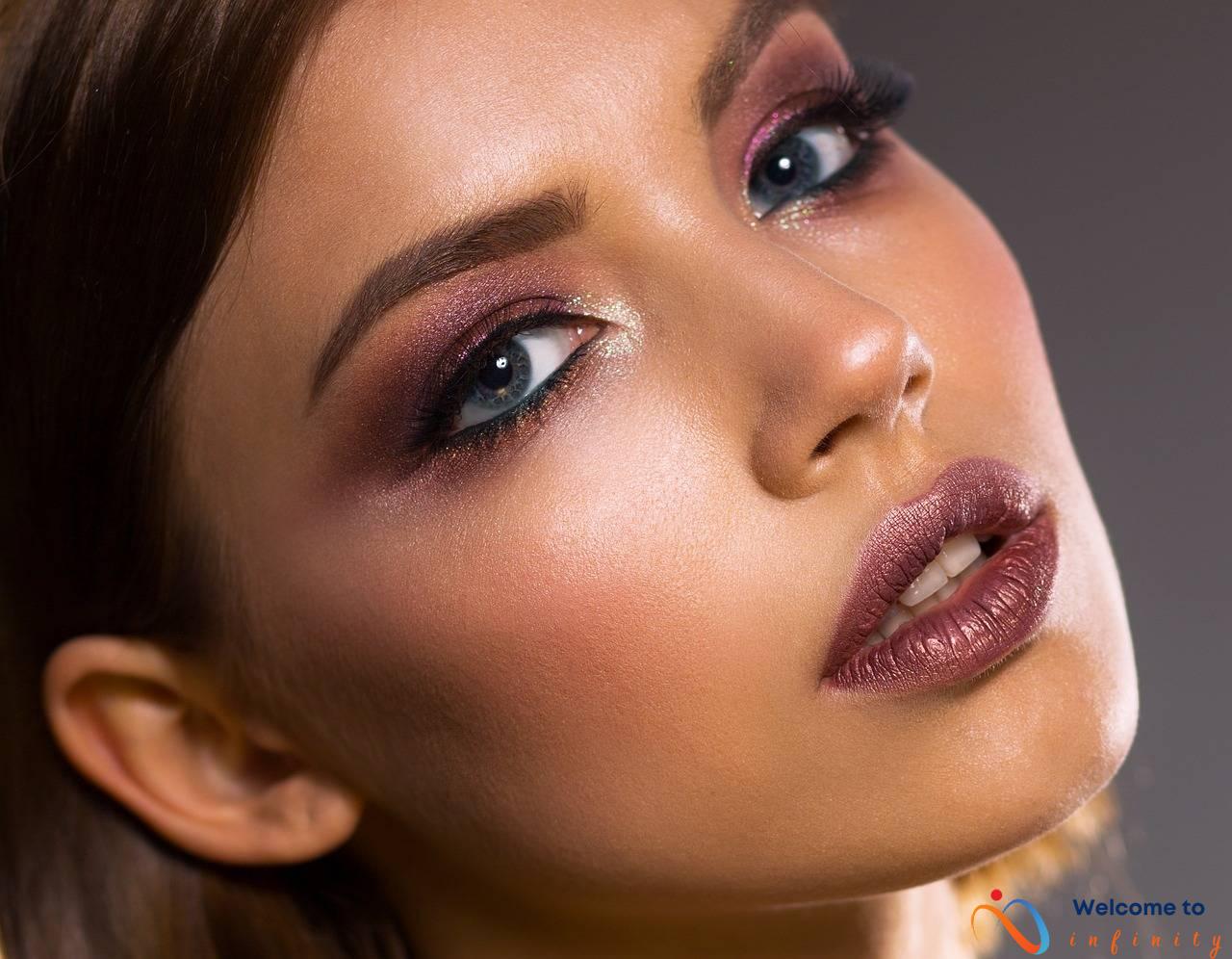Having combination skin can be a real challenge when it comes to achieving a healthy and balanced complexion. Combination skin is characterized by having both oily and dry areas, typically in the T-zone area, forehead, nose, and chin. maintaining a balance between these areas is crucial for overall skin health and appearance.
Fortunately, a consistent and tailored skincare routine can help to achieve the desired balance and maintain harmony between oily and dry areas. Understanding your skin type and its specific needs is the first step in designing an effective skincare routine. With a few simple steps, you can have a radiant and healthy-looking complexion.
The key to a good skincare routine for combination skin is balance. Neither oily nor dry areas should be neglected. A gentle, sulfate-free cleanser should be used twice daily to remove dirt, oil, and makeup without stripping the skin of its natural oils. Toning can help to balance the oily and dry areas of the skin. A toner with ingredients such as witch hazel and tea tree oil can help to control oil production in the T-zone while hydrating dry areas.
Moisturizing is also crucial for combination skin to keep it balanced and healthy. A lightweight, oil-free moisturizer should be used in the morning, while a heavier cream can be applied at night to provide additional hydration. It's important to remember that combination skin may be prone to breakouts in the T-zone. Spot treatment with salicylic acid can help to unclog pores and prevent future breakouts.
Lastly, protecting the skin from UV damage is essential for overall skin health. A broad-spectrum sunscreen with an SPF of at least 30 should be used daily, even on cloudy days. Adequate hydration is also important for all skin types, including combination skin. Drinking plenty of water and avoiding excessive caffeine and alcohol can help to maintain skin hydration from within.
Understanding Combination Skin
If you have combination skin, you may experience both oily and dry areas on your face. These areas are usually found in the T-zone area, forehead, nose, and chin. Understanding your skin type and its specific needs is crucial in developing an effective skincare routine. Combination skin requires a balance between hydration and oil control to create a healthy and glowing complexion.
It is important to identify the oily and dry areas of your skin to choose the appropriate products that cater to your specific needs. Using harsh products that strip natural oils from your skin can make dry areas worse while using heavy creams can cause excessive oil production in the T-zone, leading to breakouts.
A well-designed skincare routine for combination skin should be gentle, hydrating, and balancing. Using a gentle, sulfate-free cleanser twice a day can effectively remove dirt, oil, and makeup without stripping the skin of its natural oils. Incorporating toner with ingredients like witch hazel and tea tree oil can help balance oily and dry areas of the skin, regulate oil production, and soothe inflammation.
Moisturizing is essential for combination skin as it helps balance and nourish the skin. Using a lightweight, oil-free moisturizer in the morning can hydrate and protect the skin without causing oiliness while a richer cream can be used at night for better hydration. Additionally, spot treatment with salicylic acid can help unclog pores and prevent breakouts in the T-zone.
Recognizing your skin type and its unique needs is the first step towards an effective skincare routine. A combination of gentle cleansing, balancing toners, targeted treatments, and appropriate moisturizers can keep your combination skin healthy and glowing. It's important to remember that everyone's skin is different, so it is advised to consult a dermatologist before making any changes to your skincare routine.
Cleansing
Proper cleansing is crucial for combination skin. It is recommended to use a gentle, sulfate-free cleanser twice a day. This helps to remove dirt, oil, and makeup without stripping the skin of its natural oils. Combination skin can be tricky to cleanse as it requires a balance between the oily and dry areas of the skin. A gentle cleanser will not irritate or dry out the skin further, causing it to produce more oil, which can lead to breakouts.
When selecting a cleanser, look for one that is specifically formulated for combination skin. It should be gentle and effective in removing impurities, without stripping the skin of its natural oils. Avoid harsh cleansers that contain alcohol or fragrance, as they can irritate and exacerbate existing skin concerns like acne or dryness.
- Choose a sulfate-free cleanser that won't dry out the skin
- Look for a cleanser that is gentle and effective in removing impurities
- Avoid harsh cleansers with alcohol or fragrance that can irritate the skin
Cleansing should be done twice a day — in the morning and before bed — to remove impurities and prepare the skin for the next steps in the skincare routine. Start by wetting your face with warm water, then apply a small amount of cleanser to your fingertips. Massage the cleanser onto your face in a circular motion, being gentle around the eye area. Rinse thoroughly with warm water and pat your face dry with a clean towel.
| Tips for Cleansing Combination Skin: |
|---|
| Use a gentle, sulfate-free cleanser twice a day |
| Choose a cleanser specifically formulated for combination skin |
| Massage cleanser onto face in a circular motion, being gentle around the eye area |
| Rinse thoroughly with warm water and pat dry |
Toning
Toning is an essential step in any skincare routine, particularly for those with combination skin. A good toner has the ability to balance oily and dry areas while providing hydration to the skin. Witch hazel and tea tree oil are two ingredients to look for in a toner, as both can help to control oil production in the T-zone while hydrating dry areas.
When using a toner, it is important to gently apply the solution to your skin after cleansing. You can use a cotton pad or simply apply it with your hands, being careful not to rub too aggressively. Look for a toner that is free of harsh chemicals, as this can further disrupt the balance of your skin's natural oils.
Overall, toning is an essential step in achieving a healthy and balanced complexion for those with combination skin. By selecting the right toner with the proper ingredients for your skin type and incorporating it into a consistent skincare routine, you can better control oil production and maintain hydration to keep your skin looking its best.
Moisturizing
Moisturizing is an essential step in any skincare routine, especially for those with combination skin. This skin type needs a balance between hydration and oil control which can be achieved by using the right moisturizers.
In the morning, a lightweight, oil-free moisturizer should be used to avoid leaving a greasy residue on the skin. The moisturizer should contain hydrating ingredients such as hyaluronic acid to provide the skin with necessary moisture without clogging pores. It also creates a protective barrier that prevents water loss throughout the day.
For nighttime, it is recommended to use a thicker cream to provide additional hydration to the skin. The cream should contain nourishing ingredients such as ceramides and peptides that work together to replenish skin moisture levels, improve elasticity, and reduce the appearance of fine lines and wrinkles.
It is important to choose a moisturizer that is specific to combination skin and avoid heavy creams that may exacerbate oily areas. You can also use natural oils like jojoba and argan oil instead of creams and lotions to hydrate the skin. When applying moisturizers, always use upward motions to avoid stretching the skin.
In summary, finding a moisturizer that works for your specific combination skin needs is crucial to maintaining healthy, balanced skin. Choosing the right products and following a consistent routine can help to achieve excellent results.
Spot Treatment
Combination skin is characterized by having both oily and dry areas, which can lead to breakouts in the T-zone. Spot treatment with salicylic acid can help to unclog pores and prevent future breakouts. Salicylic acid is a type of beta-hydroxy acid that is oil-soluble, meaning that it can penetrate deep into the pores to dissolve excess oil and dead skin cells that can clog the pores.
To use salicylic acid as a spot treatment, begin by washing your face with a gentle cleanser and patting it dry. Apply a small amount of salicylic acid to a cotton swab or cotton ball and dab it onto the affected area. Be sure to only apply it to the areas of your face that are prone to breakouts. Avoid using it on your entire face, as it can be drying for those with combination skin.
Salicylic acid can cause some slight redness and irritation. If you experience any discomfort, discontinue use and talk to your dermatologist. It is also important to avoid using products that contain alcohol or other irritants, as they can further dry out the skin and aggravate breakouts.
When used correctly, spot treatment with salicylic acid can be a valuable addition to your skincare routine. It can help to clear up existing breakouts and prevent future ones, while also maintaining the balance between oily and dry areas of your combination skin.
Sun Protection
Protecting the skin from harmful UV rays is crucial for maintaining overall skin health. Sun exposure is the leading cause of skin damage, which can lead to premature aging and increase the risk of skin cancer.
A broad-spectrum sunscreen with an SPF of at least 30 should be applied daily, regardless of the weather. Even on cloudy days, UV rays can still penetrate the skin and cause damage. It's essential to apply sunscreen generously and regularly throughout the day to ensure maximum protection.
When choosing a sunscreen, look for broad-spectrum protection, which offers protection against both UVA and UVB rays. UVA rays can cause long-term skin damage and premature aging, while UVB rays are responsible for sunburns.
If you're prone to acne or have sensitive skin, choose a non-comedogenic and fragrance-free sunscreen. It's also important to reapply sunscreen every two hours if you're spending time outdoors or swimming.
In addition to wearing sunscreen, wearing protective clothing can also help to shield the skin from the sun's harmful rays. Hats, long-sleeved shirts, and sunglasses can all provide additional protection.
Remember, protecting your skin from the sun is not just for long days at the beach or by the pool. UV rays can penetrate the skin even on shorter outings or during daily activities, so it's important to make sun protection a part of your daily skincare routine.
Hydration from Within
A healthy and balanced complexion is not only achieved externally but also through internal factors. Adequate hydration from within is crucial for all skin types, especially those with combination skin. The body requires an adequate amount of water to maintain and regulate body functions, including the skin's health.
Drinking plenty of water throughout the day can help to hydrate the skin from within and promote a healthy complexion. Experts recommend drinking at least eight glasses or two liters of water a day to maintain proper hydration levels. Along with water, consuming foods with high-water content such as cucumber, spinach, and watermelon can also promote skin hydration.
On the other hand, excessive intake of caffeine and alcohol can lead to dehydration, which can affect the skin's appearance and health. Caffeine and alcohol are diuretics that increase urine production, leading to water loss from the body. Therefore, reducing or avoiding excessive caffeine and alcohol intake can help to maintain proper hydration levels, leading to healthy, balanced skin.
In conclusion, adequate hydration from within is an essential factor in achieving and maintaining healthy, balanced, and glowing skin, especially for those with combination skin. Drinking plenty of water, along with reducing or avoiding excessive caffeine and alcohol intake, can benefit both the inside and outside of the body.











